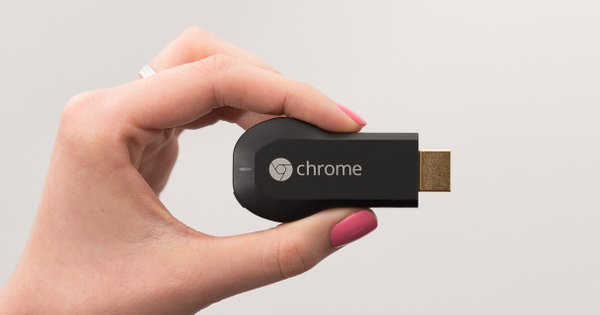Your PC hasn't been running so well for a while. Fortunately, Windows has built in a few tools (for advanced users) that allow you to troubleshoot more precisely. In this article we mainly focus on the performance counter and the reliability check.
When your system malfunctions, it is often very difficult to determine the correct cause, especially when the malfunction occurs at irregular times. However, many users are not aware that Windows stores all kinds of useful information or can perform measurements that can help you optimize or troubleshoot your system. Also Read: Make Windows 10 Run Faster With These Tricks.
We will first look at a few tools with which you can map the performance of your system (parts) over a short or long period of time. In the second part, we provide you with tools with which you can uncover the causes of an unstable system. We work with Windows 10, but the differences with previous Windows versions are not that big.
Performance
01 Resource Check
You are working on your PC and notice that your system is noticeably slower to respond, perhaps because it is busy performing another process or task. But which process or which task?
Initially, you can call the Windows Task Manager for this, with hotkey combination Ctrl+Shift+Esc. Then click here More details. On the tab Processes you then see for each application and process what percentage it takes up of the processor, memory, disk and network usage. Click on the desired column title for a custom sorting. The tab Performance gives you a usage overview of the last minute for the processor, memory, disks and network adapters. Click here the link Open Resource Monitor to see in detail for each part which processes are responsible for each use. This quick analysis can already point you to processes and applications that are using a lot of system resources at the moment.
02 Performance Monitor
If you do not find this source check detailed enough or if you want to extend the overview over a longer period, you should use another tool: the Windows Performance Monitor. You can start it by Windows key+R pressing and the command perfmon (which stands for performance monitor). Or just look for the name Performance Monitor in your Windows start menu. Make sure you are logged in as an administrator. In the left panel, click Monitoring Tools / Performance Monitor at. An empty graph window appears: the intention here is that you indicate which system components the tool should measure exactly and display them in a graph. You do this by clicking the green plus sign.
A new dialog box pops up in which you can choose from numerous computer items from a drop-down menu. Click on the arrow next to such an item to be able to work in even more detail. Example: at Physical Disk you will find no less than 21 parts, such as Average number of bytes read, Written bytes per second, Percentage of Idle Time and so forth. When you select one or more of these items, all affected instances will appear in the bottom window - in our example, these are the detected physical drives. You decide for which of these discs you want the selected items to be examined. Transfer your selection to the right panel with the button Add. As soon as you meet OK confirms, you return to the graph.
Own style
The Windows Performance Monitor initially determines itself the appearance and duration of the graph of the selected items. However, you can adjust that. Double click on such an item to open the display (Colour, Dish, Style ...) to change. Open the tab here General then you can join Duration also set the number of seconds you want to observe; by default it is 100 seconds. With the Delete key you no longer delete desired items. At the top of the graph window you will find a button to stop or resume the measurement.
03 Data Collector Sets (1)
It's quite a mouthful, but in the left panel of the Performance Monitor you'll find another interesting option: Data Collector Sets. This allows you to measure background performance over a longer period of time. Open the section Data Collector Sets and right click User defined. Choose New / Data Collector Set. Give the set a suitable name and dot Create manually (advanced) at. Press Next one and choose (for our purposes) Performance counter. However, if you want to follow certain registry values, choose here System Configuration Information. Press . again Next one and mark all desired items via Add. Determine the desired interval for each of the selected items (e.g. every 15 seconds). Confirm twice with Next one. Choose Start this data collector set now, or choose Save and Close if you don't want to run the set until later. Finish with Complete.
04 Start the collection!
You can start and stop the check at any time by selecting your set at Data Collector Sets / User Defined / and pressing the start or stop button. Afterwards you can view the corresponding report in the left panel, by clicking at Reports / Definedby the user double-clicking on the name of your set. It is also possible to activate the check at set times. Click on the name of your set at Data Collector Sets right-click and choose Characteristics. On the tab Scheme add the desired times via the button Add. On the tab Stop condition it is possible to indicate under which circumstances you want such a check to be terminated automatically.
Stability
05 System diagnosis
It is also possible to run a quick system diagnosis from the Performance Monitor. It checks your system for a whole range of parts: from malfunctioning or malfunctioning hardware components to, for example, a 'dirty bit' check on disks (the latter can occur when pending writes have not been successfully completed). You start such a diagnosis as follows: open Data Collector Sets / System, select System Diagnostics and start checking. After exactly one minute you will find the result of this test at Reports / System / SystemDiagnostics. Click on the diagnosis: at the top of the report you get an overview of the detected errors and warnings.

